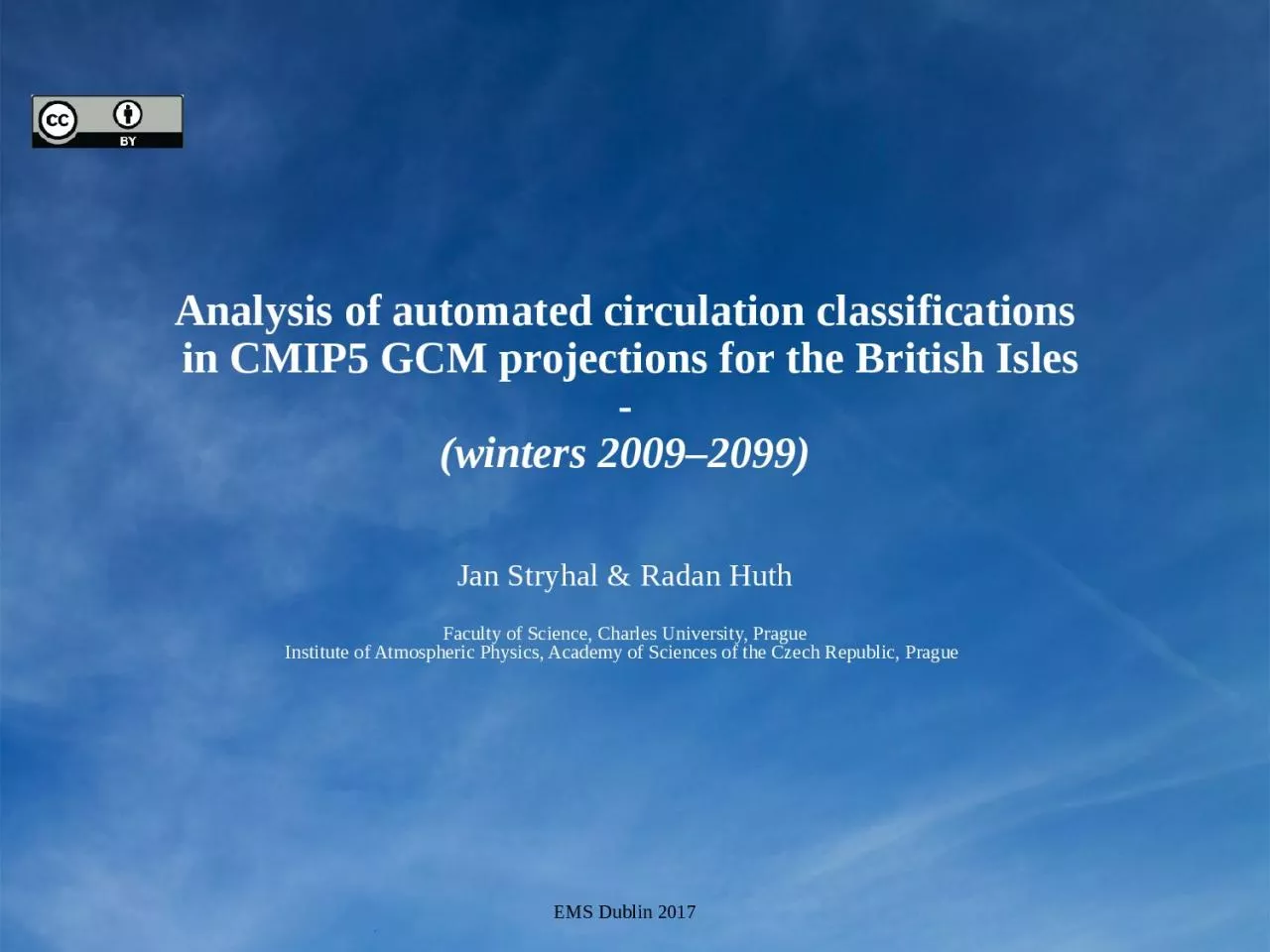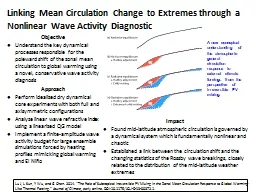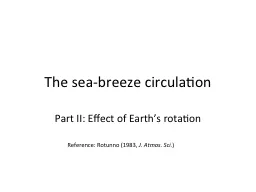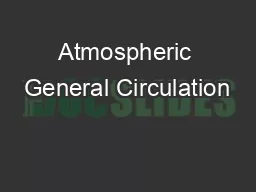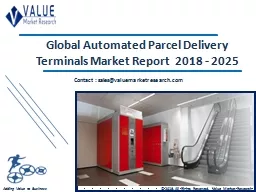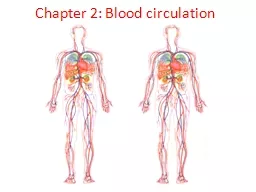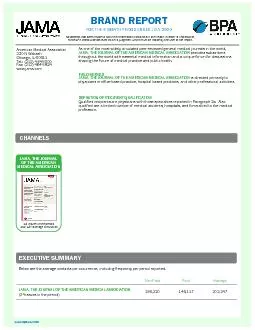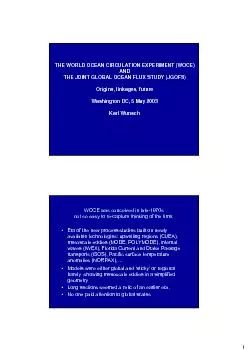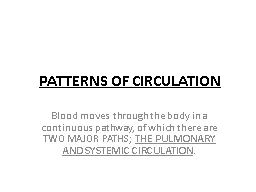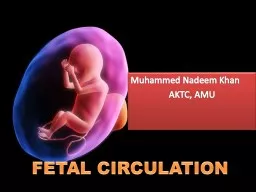PPT-Analysis of automated circulation classifications
Author : jacey | Published Date : 2023-10-04
in CMIP5 GCM projections for the British Isles winters 20 09 2 099 Jan Stryhal amp Radan Huth Faculty of Science Charles University Prague Institute of Atmospheric
Presentation Embed Code
Download Presentation
Download Presentation The PPT/PDF document "Analysis of automated circulation classi..." is the property of its rightful owner. Permission is granted to download and print the materials on this website for personal, non-commercial use only, and to display it on your personal computer provided you do not modify the materials and that you retain all copyright notices contained in the materials. By downloading content from our website, you accept the terms of this agreement.
Analysis of automated circulation classifications: Transcript
Download Rules Of Document
"Analysis of automated circulation classifications"The content belongs to its owner. You may download and print it for personal use, without modification, and keep all copyright notices. By downloading, you agree to these terms.
Related Documents

